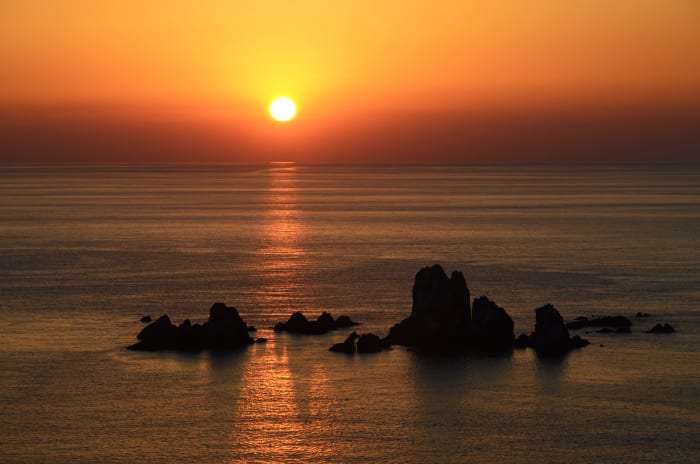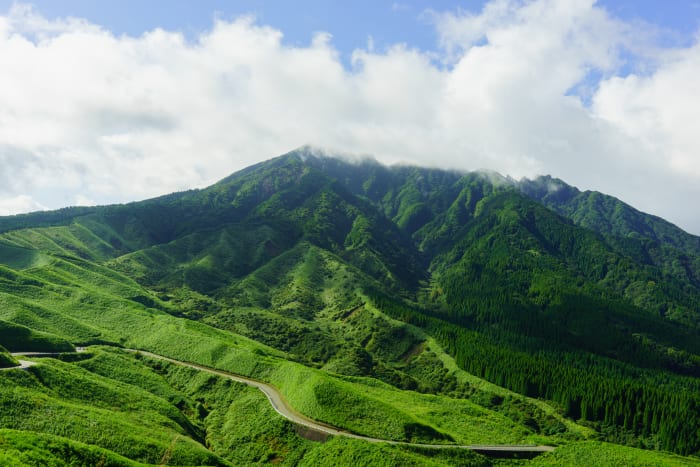The Japanese archipelago encompasses a diverse range of natural landscapes, from snowcapped mountains to vibrant coral reefs. National parks play a valuable role in protecting Japan’s scenic beauty, cultural traditions, and the enduring relationship between humans and nature.
Incredible Nature
The Japanese archipelago is rich with biodiversity. The country stretches 3,000 kilometers from north to south, so its climate ranges from subarctic to subtropical. These conditions have nurtured a variety of flora and fauna, many of which are unique to the islands.
Japan’s national parks contain smoking volcanoes, alpine peaks, lush marshlands, colorful coral reefs and primeval forests. Their inhabitants include “living fossils” like the giant salamander and Japanese horseshoe crab, as well as rare endemic mammals such as the Iriomote cat and the goat-like Japanese serow. Visitors can venture up mountain slopes to see wildflowers that cannot be found anywhere else in the world, or explore a forest of millennium-old Japanese cedar trees. National parks play a crucial role in protecting these priceless natural wonders and preserving them for future generations.

Foundation of the National Parks
As of 2024, there are 35 national parks stretching from Hokkaido to Okinawa. They cover about 24,444 square kilometers of land, equivalent to 6.5 percent of Japan’s land area.
The history of Japan’s national parks starts with the National Parks Act, which was passed in 1931 to recognize increasing calls to preserve and protect Japan’s natural landscapes. On March 16, 1934, Setonaikai, Unzen and Kirishima became Japan’s first national parks. Aso, Nikko, Chubusangaku, Akan and Daisetsuzan were added to the list in December of the same year. The country’s present-day classification of natural parks, which includes national parks, quasi-national parks and prefectural natural parks, came about after a comprehensive revision of the Natural Park Act in 1957. Since 1971, the Ministry of the Environment has been in charge of managing the national parks.

Japan’s Unique Natural Parks System
Unlike national parks in the United States or Australia, for example, the land within Japan’s national parks is not entirely government-owned. It includes a mix of private land, prefectural land and local government land, and is inhabited by people. For instance, over 90% of Ise-Shima National Park is privately owned. The government decided to adopt this kind of regional natural park system because of the country’s limited land area and high population density. Many national parks include farmland and villages, giving visitors a look into local cultures and long-standing traditions.
The management of national parks takes local lifestyles into account and involves the collaboration of a wide range of groups and stakeholders to protect the natural environment. This is what distinguishes Japan’s national park from others around the globe.

Where Humans and Nature Coexist
Humans have played an important role in shaping and conserving Japan’s spectacular landscapes. Uniquely Japanese initiatives known as satoyama and satoumi are notable examples of how humans can live in harmony with nature while enriching the ecosystem. Satoyama is a broad concept that refers to the overlapping area between mountain foothills and flat farmland, and it includes agricultural fields, secondary forests (forests which have regrown after being harvested for timber) and wetlands. Satoyama serve as a habitat for a variety of flora and fauna, while providing agricultural or forestry-related benefits to local communities. Similarly, satoumi includes biodiverse marine and coastal landscapes shaped and preserved by long-term interactions between humans and the ecosystem.
Japanese traditions such as rice cultivation, sake brewing, bathing in hot springs and even spiritual beliefs all have inseparable connections with the natural world. Japan’s national parks are a testament to the enduring relationship between humans and nature, and contribute to preserving these connections. The magnificent landscapes of the national parks allow you to immerse yourself in nature, culture and local traditions. They are full of stories for visitors to experience. Step foot into the national parks of Japan to create your own story.


















